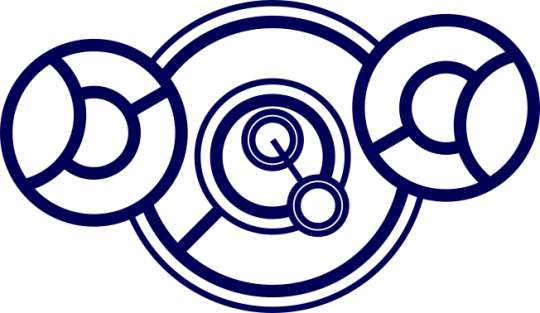#(mainly bc I was getting annoyed at how much space the oʊ dipthong took up)
Text
Introducing: The Linguist's Phonetic Gallifreyan


This is a modification of Brittany G.'s Doctor's Cot Gallifreyan, which reorganized the layout of the Consonants and Vowels tables, adjusted how punctuation works, and added two new mechanics for quality of life. Its full title is The Linguist's Phonetic Gallifreyan, but the shorthand, for lack of a better idea, is GalliPhon. Interested to know the details? Read on!
I started working in Doctor’s Cot a few months ago. It’s interesting, and a fun change of pace from Sherman’s Circular, but it has a few flaws that have really started to dig at me. Firstly, despite the system being made to represent any language, it still is clearly made with English in mind. Nearly all English consonantal sounds are contained in the top left corner of the consonant table. While it does not bother me all that much that the system is made with English as the primary use — I do primarily use Sherman’s Circular, after all — it leads to all the consonants looking samey, and the layout feeling otherwise purely random. In a similar vein, all the English consonants being clustered together led to a lot of indistinguishable consonant pairs. I have dealt with this by leaving lines unconnected on one side, or dots attached to their corresponding circle, but this feels cheap, as Brittany did specify that indistinguishable consonants should be separated into new circles, which I find tedious and aesthetically displeasing. Another problem with the layout is that א’s circle ends up being a pain to make every time I need to write a word that starts with a vowel. For these reasons, I decided to reorganize the charts to have a more logical layout. And, while I was at it, I modified the formulation of punctuation to accommodate more punctuation marks and added two new mechanics to make formulating words less tedious: diphthong bridges and the reversal dot. As a warning, this is NOT a guide to the use of Phonetic Gallifreyan. To learn how to play, I would recommend checking out Brittany’s walkthrough, using my charts instead of the Doctor’s Cot ones.
The Consonant and Vowel Charts
They are now loosely organized based on the IPA categorizations in the 2020 chart. Broadly speaking: a single thin line corresponds to trills, taps, and approximants; double thin lines corresponds to laterals; a thin outer line and thick inner line corresponds to unvoiced fricatives; a thick outer line and thin inner line corresponds to voiced fricatives; double thick lines corresponds to nasals; and a single thick line corresponds to plosives. And for decorations (going from left to right in the chart because they are hard to describe): alveolar, retroflex, postalveolar, dental, “other symbols,” pharyngeal and glottal; labiodental; bilabial; uvular; velar; and palatal. The symbols do not always correspond exactly, but that’s the general organization I worked off of. For the vowels, I went easier on myself and organized them mostly by the English vowels, left-to-right O, U, A, I, and E. Additionally, as there are 28 base IPA vowel sounds but 30 spaces, I included the two most common diphthongs, ai and au. However, as I now have an option to make diphthongs, these are not recommended for use.
Diphthongs
I have added a function that will allow you to have two vowel sounds in a single circle, but only if they are part of a diphthong. Distinct vowel sounds must be in different syllable circles, even if there is no consonant between them. Two vowels in a dipthong, however, may be connected by a diphthong bridge, a line leading from the edge of the first vowel to the middle of the second. An example of both a diphthong and a still separate vowel can be seen in Ohio: /oˈhaɪ o/

Vowel/Consonant Reversal
The other function I am adding is the reversal dot, necessitated by how annoying it is that words like “is,” “and,” and “or,” require two circles despite their simplicity. So, in Phonetic Gallifreyan, you can add a filled dot to the center of a word circle to indicate it should be read vowel first. Consonants still go outer circle first, then inner circle. As an example: “and” /ænd/

Punctuation
The primary change is that they don’t consist of two circles, just one. This way, a limited pool of punctuation can be combined to create more punctuation, like combining a period and a comma to make a semicolon, or three periods to make an ellipsis, or even some rarer punctuation like the interrobang (‽)

Credit to Brittany G. for the basis, and to Wikipedia and Phoible for research on IPA, punctuation, and more.
#UPDATED MARCH 27 2023#if you are translating any GalliPhon posted before this date you will get ɤ where ʊ was intended#the ʊ ɯ and ɤ vowels have been moved (essentially clockwise)#(mainly bc I was getting annoyed at how much space the oʊ dipthong took up)#also apologies for how terrible this all looks#unlike Brittany I am far from being a graphic designer#GalliPhon#gallifreyan#doctor who#The Linguist#conlang
205 notes
·
View notes